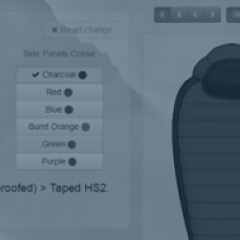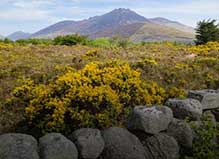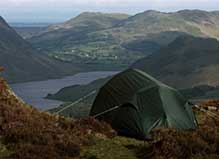Down Quality
The size and liveliness of the individual clusters (puff-ball bits of down with virtually no quill) define the quality of the down. Size and liveliness are both important and do not always co-exist. The final quality of the filling used is governed by two separate factors: the intrinsic quality of the raw down and the processing.
Raw Down
Age - the age of the birds when they are killed is one of the chief determinants of the size of the cluster. The older the bird the larger the cluster. Unfortunately meat production has been heading in the opposite direction for years and modern intensive methods have cut down the life of the birds until it is now measured in a few weeks in the most ‘efficient’ places.
Size and Breed - Generally the bigger the bird the larger the cluster. This is one major reason why goose down has always carried the tag of being superior to duck: it comes from a larger bird. The size and liveliness of downs also vary between different breeds of bird.
Climate - There is a tendency for colder weather to induce larger denser clusters. However, this effect is often more noticeable in seasonal (winter/summer) variations in the same down than in a global ‘map’ of down quality by latitude. Some good downs have come out of the Caribbean and Vietnam.
Duck/Goose - From what has been said so far, the ideal source of raw down would appear to be an old goose of a large breed living in Siberia: attempts to cultivate such a source have to date been a failure. At present the highest quality comes from parts of Europe where geese are reared to live a little longer in a climate with a cold winter. Properly sourced the best goose is far superior to the best duck: but further down the performance scale some duck downs can offer very good value.
Processing
Processing has more effect on the final quality of down than most people would believe. Right from the plucking stage through washing, drying, dedusting, sorting and blending, different handling gives different results.
Plucking (from dead birds) - Wet-plucking is the normal method: it is quick and easy for the food processors who just want to get rid of the plumage. Dry-plucking is uncommon now - a pity as it is gentler to the down.
Washing - Raw plumage besides being just plain dirty boasts one of the nastiest smells on the planet. Washing has to be a very thorough process, but a very careful one also - this is one of the stages where the down can deteriorate considerably without careful handling.
Drying - Another important process, needing specialised equipment.
Sorting - After washing and drying the clean plumage is put in a chamber with air jets blowing from below. It floats up and over a series of open-topped cubicles: feathers (the heaviest) fall into the first cubicle, pure down (the lightest) floats along to the furthest.
Dedusting - Dust is routinely removed at various stages of processing. Unless this is carried out thoroughly, an undue amount of dust will remain in the final product.
Blending - This process is used to provide specific mixtures of different downs or of down and feather (90/10, 80/20, etc). It is also a useful way of ensuring consistent quality throughout a batch of down by mixing it thoroughly after sorting and before bagging.
This outline of down processing describes the methods in general use. There are rare exceptions such as Eiderdown which is hand-gathered from the ducks’ nests and contains many foreign substances - twigs, etc. The peculiar nature of the down makes it impossible to blow through a sorter, so these impurities have to be picked out by hand. A long and costly process.
More on down:




















